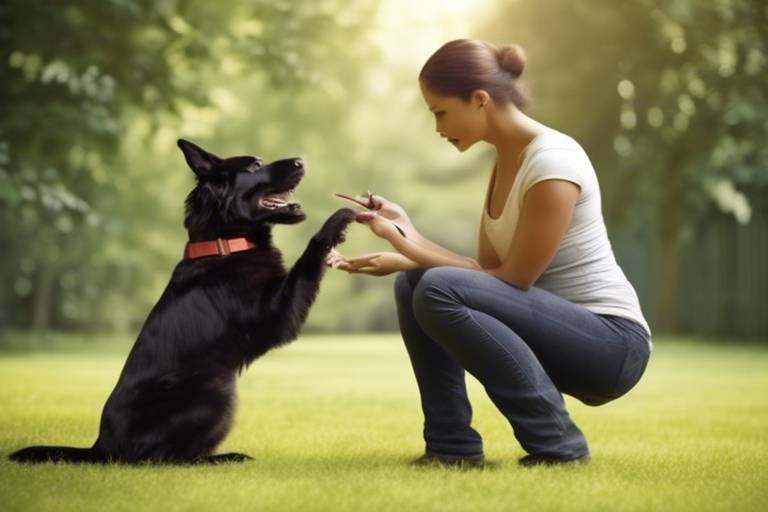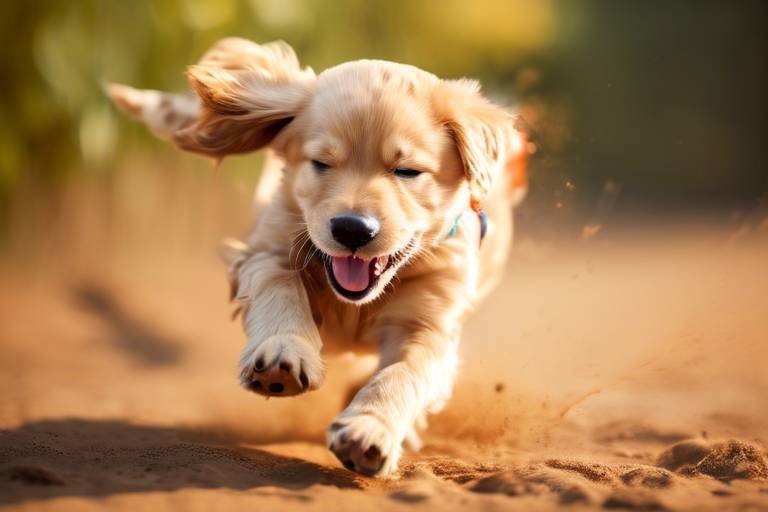Tips for Training Your Dog to Enjoy Bath Time
Bath time can often feel like a daunting task for both you and your furry friend. If your dog dreads the idea of a bath, rest assured that you’re not alone. Many pet owners face this challenge. However, with a little patience and the right approach, you can transform bath time into a fun and enjoyable experience for your pup. Imagine your dog wagging their tail with excitement, rather than cowering in fear at the sight of water! In this article, we’ll explore practical tips and techniques that will help you make bath time a positive experience, ensuring cleanliness and comfort for both you and your furry companion.
Before diving into the bathing process, it's crucial to understand your dog's feelings about water. Dogs can experience anxiety for various reasons, such as past negative experiences or unfamiliar sensations. Recognizing the signs of anxiety—like trembling, whining, or trying to escape—can help you tailor your approach. For instance, if your dog seems nervous, consider starting with a dry bath or simply introducing them to the bathing area without water. This gradual exposure can build trust and reduce fear, making the actual bath time feel less intimidating.
The right supplies can make a world of difference during bath time. Think of it as preparing a cozy spa day for your dog! Start by selecting a gentle, dog-friendly shampoo that suits your pet's coat type and skin sensitivity. For example, if your dog has a thick coat, a shampoo designed for that texture will work wonders. Additionally, the right brushes and bathing tools can enhance the experience. A non-slip mat will keep your dog safe and secure, while a detachable showerhead can make rinsing easier and more enjoyable.
Understanding the various types of dog shampoos available can help you choose the best option for your dog’s specific coat type and skin sensitivity. Here’s a quick overview of some common types:
- Hypoallergenic shampoos: Ideal for dogs with sensitive skin, these shampoos minimize irritation and are gentle on your pet's coat.
- Natural ingredient shampoos: These products offer a safe way to clean your dog without harsh chemicals, making them a great choice for health-conscious pet owners.
- Deodorizing shampoos: Perfect for dogs that love to roll in the dirt or get into mischief, these shampoos help eliminate odors effectively.
Using the right tools can significantly enhance your dog's bathing experience. Non-slip mats can prevent slips and falls, while a detachable showerhead allows for precise rinsing. You might also consider using a rubber brush to massage your dog’s skin while washing, as this can help create a soothing experience. Remember, the goal is to make bath time as enjoyable as possible, so choose tools that will facilitate a positive atmosphere.
Establishing a calm and inviting space for bath time can help reduce your dog’s stress. Think of it as creating a mini oasis! Start by choosing a location that feels safe and familiar to your dog. You can even play their favorite music or use calming scents like lavender to set the mood. Additionally, incorporating treats and verbal praise during bath time can reinforce positive behavior. Every time your dog cooperates, reward them with a treat or a gentle pat. This approach not only encourages good behavior but also builds a positive association with bath time.
Introducing your dog to water slowly can help them acclimate and reduce fear. Start by letting them explore the bathing area without water. Once they seem comfortable, you can introduce a small amount of water. Use a cup or a gentle spray to wet their coat gradually, allowing them to adjust at their own pace. This gentle approach can help your dog feel more secure and less anxious about the entire process.
Creating a regular bathing schedule can help your dog anticipate bath time, making them more comfortable and cooperative. Just like humans, dogs thrive on routine. Try to bathe your dog at the same time every week or month, depending on their needs. If your dog is particularly active or has a long coat, they may require more frequent baths. Understanding how often your dog needs a bath based on their breed and lifestyle can help you maintain a consistent bathing routine.
Recognizing the signs that your dog needs a bath is key to keeping them clean and comfortable. Look out for:
- Unpleasant odors emanating from their coat.
- Visible dirt or mud buildup.
- Excessive scratching or skin irritation.
By staying attuned to these signs, you can ensure your dog remains fresh and happy.
Taking care of your dog after bath time is just as important as the bath itself. Proper drying techniques can prevent your dog from becoming chilled. Consider using a soft towel or a pet-friendly blow dryer on a low setting to dry their coat gently. After drying, brushing your dog’s fur can help maintain a healthy coat and prevent matting. Regular brushing not only keeps their coat looking great but also promotes bonding time between you and your furry friend.
Using the right drying techniques can make a big difference in your dog's comfort. If your dog is nervous about the dryer, try using a towel first to absorb excess water. Gradually introduce the dryer by letting them hear it from a distance before bringing it closer. This way, they can get used to the sound without feeling overwhelmed.
Regular brushing after baths can help maintain your dog’s coat health and prevent matting. A well-groomed coat not only looks good but also contributes to your dog’s overall well-being. Consider using a brush that suits your dog's coat type, whether it’s a slicker brush for long-haired breeds or a bristle brush for short-haired ones.
Q: How often should I bathe my dog?
A: It depends on the breed and lifestyle of your dog. Generally, every 4-6 weeks is a good rule of thumb, but active dogs may need more frequent baths.
Q: Can I use human shampoo on my dog?
A: No, human shampoos can be too harsh for a dog's skin. Always use a shampoo specifically formulated for dogs.
Q: What should I do if my dog is terrified of water?
A: Start by introducing them to water slowly and using positive reinforcement. Make it a fun experience with treats and praise.
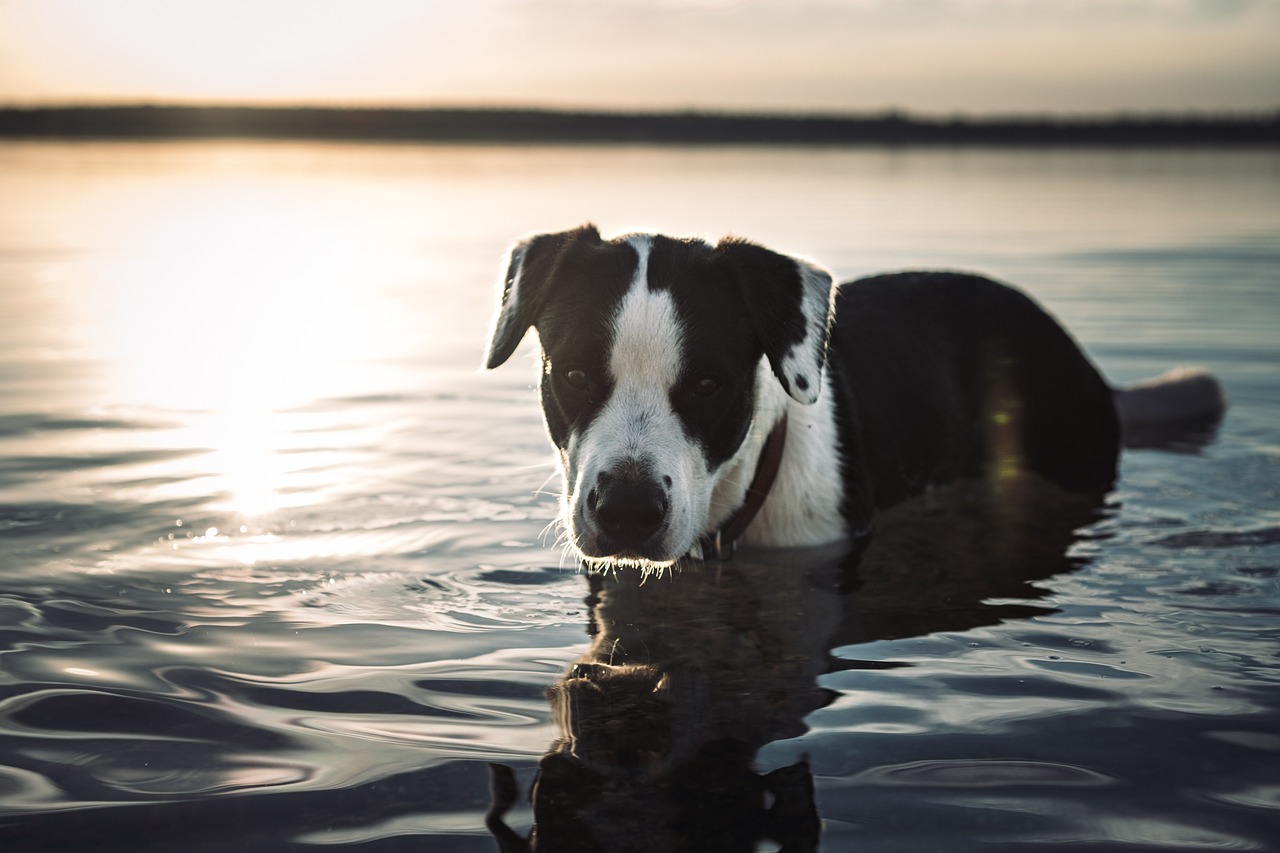
Understanding Your Dog's Anxiety
When it comes to bath time, many dogs experience anxiety that can make the whole process a bit of a challenge. is crucial for creating a positive bathing experience. Just like humans, dogs can feel nervous or scared in unfamiliar situations, and bath time can be a source of stress for them. You might notice signs such as excessive barking, whining, or even attempts to escape the bathing area. Recognizing these signs is the first step in helping your furry friend feel more at ease.
One of the most important things to remember is that your dog’s anxiety can stem from various factors. For instance, if your dog had a negative experience during a previous bath, they might associate bath time with fear. Additionally, some dogs are simply more sensitive than others. Breeds known for their sensitivity, such as Greyhounds or Shih Tzus, may require extra patience and care. It's essential to approach bath time with empathy, understanding that your dog may not be as excited about it as you are.
You can also create a comfortable environment by observing your dog's body language. Signs of anxiety might include:
- Tail tucked between the legs
- Excessive panting
- Trying to hide or escape
- Growling or snapping
By being aware of these signs, you can tailor your approach to suit your dog's needs. For example, if you notice your dog is particularly anxious about water, you might want to start by introducing them to water in a less intimidating way, such as using a damp cloth to wipe them down instead of a full bath.
Building trust with your dog is also essential. Spend time with them in the bathing area without the water running, allowing them to explore and feel comfortable in that space. Incorporate their favorite toys or treats to make the environment feel more inviting. Remember, patience is key! You want your dog to associate bath time with positive experiences rather than fear.
In summary, understanding your dog's anxiety is about recognizing their unique needs and fears. By observing their behavior, creating a safe environment, and building trust, you can help your dog feel more comfortable during bath time. With time and patience, your furry friend will learn that bath time can be a fun and enjoyable experience!
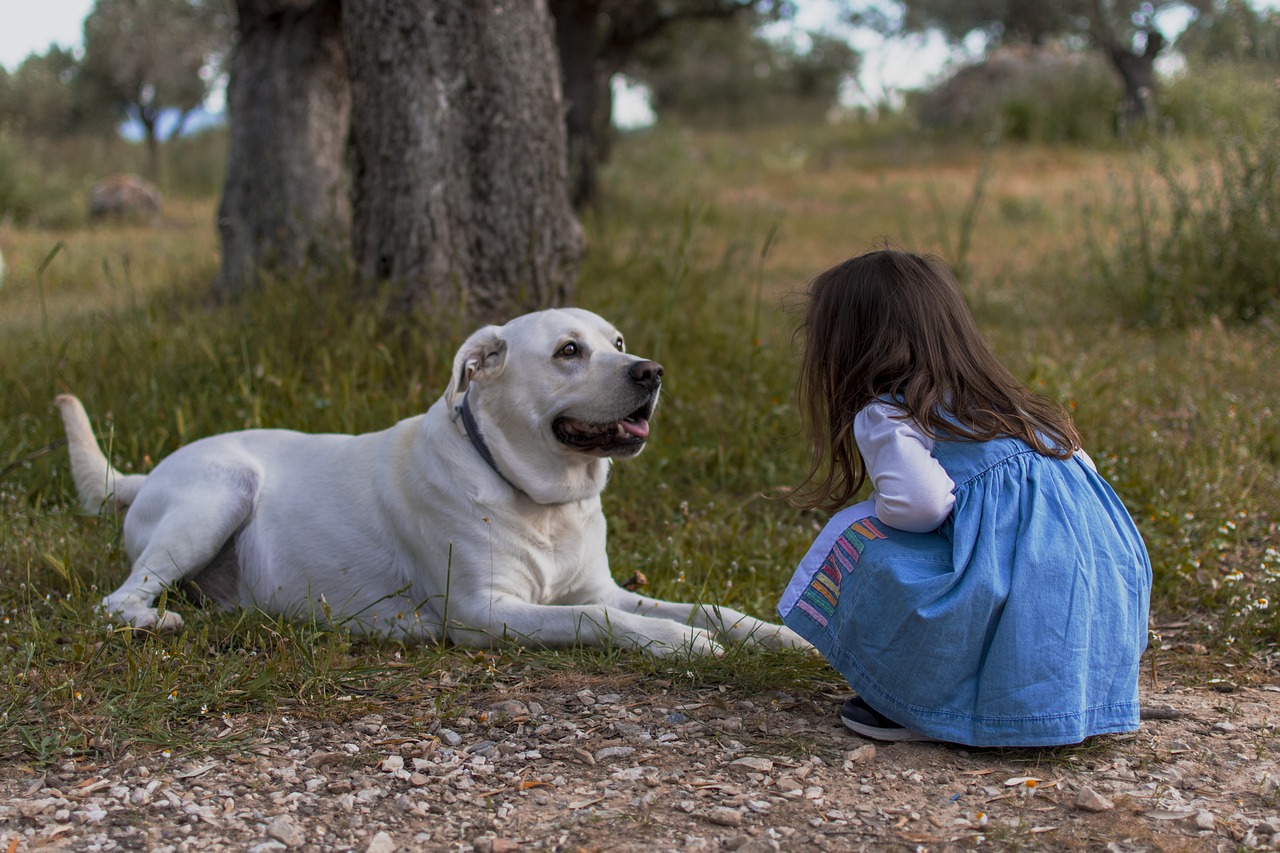
Choosing the Right Bathing Supplies
When it comes to making bath time a delightful experience for your dog, is essential. Imagine trying to enjoy a day at the beach, but the sand is too hot to walk on, and the waves are crashing too hard. That's what your dog feels when they are bathed with unsuitable products or tools. The right supplies can transform bath time from a dreaded chore into a fun bonding experience. So, let's dive into what you need to consider when selecting the perfect bathing supplies for your furry friend!
First and foremost, you need to select a high-quality dog shampoo. Not all shampoos are created equal, and using a product designed specifically for dogs is crucial. Human shampoos can disrupt the natural pH balance of your dog's skin, leading to dryness and irritation. Instead, look for shampoos that cater to your dog's specific needs—whether they have a sensitive skin condition, a particular coat type, or even if they require a medicated option for skin issues. This careful selection can help maintain your dog's coat health while ensuring they feel comfortable during and after bath time.
Understanding the various types of dog shampoos available is key to making an informed decision. For instance, hypoallergenic options are excellent for dogs with sensitive skin, as they minimize irritation and provide a gentle cleansing experience. Additionally, shampoos with natural ingredients can offer a safe and effective way to clean your dog without harsh chemicals. They are often infused with soothing ingredients like oatmeal or aloe vera that can help calm irritated skin.
| Shampoo Type | Best For | Key Ingredients |
|---|---|---|
| Hypoallergenic | Sensitive Skin | Oatmeal, Aloe Vera |
| Natural | All Coat Types | Plant Extracts, Essential Oils |
| Medicated | Skin Conditions | Chlorhexidine, Benzoyl Peroxide |
Next up, let's talk about bath tools and accessories. Just like a painter needs the right brushes and canvas, you need the right tools to make bath time smoother. Consider investing in a non-slip mat to ensure your dog feels secure while standing in the tub. A detachable showerhead can also be a game-changer, allowing you to control the water flow and temperature easily. This not only makes rinsing easier but also helps to keep your dog calm, as they won’t be overwhelmed by a sudden rush of water.
Finally, don’t forget about brushes. Regular brushing before bath time helps remove loose fur and dirt, making the bathing process more effective. Plus, it can be a great way to bond with your dog! Choose a brush that suits your dog's coat type—whether it’s a slicker brush for long-haired breeds or a bristle brush for short-haired ones. The right brush will make a world of difference in keeping your dog's coat healthy and shiny.
In conclusion, choosing the right bathing supplies is not just about picking items off the shelf; it’s about understanding your dog's unique needs and preferences. By carefully selecting shampoos, tools, and accessories, you can create a bath time routine that is not only effective but also enjoyable for both you and your furry companion. So, gear up with the right supplies, and get ready to turn bath time into a fun adventure!
Types of Dog Shampoos
This article provides practical tips and techniques to help make bath time a positive experience for your dog, ensuring cleanliness and comfort for both you and your furry friend.
Recognizing the signs of anxiety in your dog can help you tailor a bath time routine that alleviates their fears and builds trust in the process.
Selecting the appropriate shampoo, brushes, and bathing tools can make bath time more enjoyable for your dog while ensuring their skin and coat remain healthy.
When it comes to keeping your dog clean, the type of shampoo you choose can make a world of difference. Just like humans, dogs have different skin types and coat conditions that require specific care. There are several types of dog shampoos available, each designed to address unique needs. First, you have your basic cleansing shampoos, which are great for regular cleaning but might not cater to specific issues. Then, there are therapeutic shampoos that target skin conditions such as allergies, dryness, or infections.
One popular category is hypoallergenic shampoos, which are formulated to minimize irritation for dogs with sensitive skin. These shampoos are typically free from harsh chemicals and fragrances that might cause discomfort. On the other hand, natural ingredient shampoos are gaining popularity among pet owners who prefer eco-friendly options. These shampoos often contain ingredients like oatmeal, aloe vera, and essential oils, providing a gentle yet effective clean without the use of synthetic compounds.
To help you understand the differences better, here’s a quick comparison:
| Type of Shampoo | Description | Best For |
|---|---|---|
| Basic Cleansing | Regular cleaning without special ingredients | General use |
| Hypoallergenic | Minimizes irritation, free from harsh chemicals | Sensitive skin dogs |
| Natural Ingredients | Made with eco-friendly components | Eco-conscious pet owners |
| Therapeutic | Treats specific skin conditions | Dogs with skin issues |
Choosing the right shampoo is crucial for your dog's skin health. Always consult your veterinarian if you're unsure about which type to use, especially if your dog has existing skin problems. Remember, a happy dog is a clean dog!
Establishing a calm and inviting space for bath time can help reduce your dog’s stress and encourage them to enjoy the experience.
Incorporating treats and verbal praise during bath time can reinforce positive behavior and create a more enjoyable atmosphere for your dog.
Introducing your dog to water slowly can help them acclimate and reduce any fear associated with bathing, making the process smoother over time.
Creating a regular bathing schedule can help your dog anticipate bath time, making them more comfortable and cooperative during the process.
Understanding how often your dog needs a bath based on their breed and lifestyle can help you maintain a consistent bathing routine.
Recognizing the signs that your dog needs a bath, such as odor or dirt buildup, can help you keep them clean and comfortable.
Taking care of your dog after bath time, including drying and brushing, can enhance their experience and promote a healthy coat.
Using the right drying techniques can help prevent your dog from becoming chilled and ensure they feel comfortable after their bath.
Regular brushing after baths can help maintain your dog’s coat health and prevent matting, contributing to their overall well-being.
- How often should I bathe my dog? It depends on the breed and lifestyle, but generally, every 4-6 weeks is a good rule of thumb.
- Can I use human shampoo on my dog? It's best to avoid human shampoos as they can disrupt your dog's skin pH balance.
- What if my dog hates water? Gradually introduce them to water and use treats to create a positive association.
Hypoallergenic Options
When it comes to choosing the right shampoo for your furry friend, are often the best choice for dogs with sensitive skin. These specially formulated shampoos are designed to minimize irritation and provide a gentle cleansing experience. If your dog has experienced skin issues in the past, such as rashes or excessive itching, then opting for a hypoallergenic shampoo can be a game changer.
Hypoallergenic shampoos typically contain fewer harsh chemicals and fragrances, which can trigger allergic reactions. Instead, they focus on using milder ingredients that cleanse without stripping the skin of its natural oils. This is crucial for maintaining a healthy coat and ensuring your dog feels comfortable during and after bath time. Many pet owners report that their dogs seem more relaxed and less anxious during baths when they use hypoallergenic products.
Moreover, hypoallergenic shampoos can be beneficial for breeds that are prone to skin sensitivities. For instance, breeds like Bulldogs and West Highland Terriers often have skin conditions that require careful attention. By using a shampoo specifically designed for sensitive skin, you can help alleviate discomfort and promote a healthier skin barrier.
In addition to choosing the right shampoo, it’s essential to pay attention to the bathing process itself. Make sure to rinse thoroughly to remove all shampoo residue, as leftover product can also irritate your dog's skin. To give you a clearer idea of what to look for in a hypoallergenic shampoo, here’s a quick comparison table:
| Feature | Hypoallergenic Shampoo | Regular Shampoo |
|---|---|---|
| Harsh Chemicals | Minimal | Common |
| Fragrance | Natural or None | Artificial |
| Skin Irritation | Low Risk | Higher Risk |
| Recommended For | Sensitive Skin Dogs | All Dogs |
Ultimately, the goal is to ensure that bath time is a positive experience for both you and your dog. By selecting a hypoallergenic shampoo, you can help your pup enjoy their bath without the worry of skin irritation. Always consult with your veterinarian if you're unsure which product is best for your dog, as they can provide personalized recommendations based on your dog's specific needs.
- What are the signs my dog has sensitive skin? Look for symptoms like excessive scratching, redness, or flaky skin.
- Can I use human shampoo on my dog? It's not recommended, as human shampoos can disrupt a dog's skin pH balance.
- How often should I bathe my dog with sensitive skin? Generally, every 4-6 weeks is sufficient, but consult your vet for personalized advice.
Natural Ingredients
When it comes to choosing the right shampoo for your furry friend, opting for can be a game changer. Not only do these shampoos provide a gentle cleansing experience, but they also ensure that your dog is not exposed to harsh chemicals that could irritate their skin. Imagine bathing your dog with a product that feels as soothing as a gentle breeze on a warm day; that’s the kind of comfort you want for your pet. Natural ingredients like oatmeal, aloe vera, and coconut oil are not just buzzwords; they offer real benefits for your dog’s coat and skin health.
For instance, oatmeal is renowned for its soothing properties, making it ideal for dogs with sensitive skin. It helps to alleviate itching and irritation, providing a calming effect that can turn bath time from a dreaded chore into a delightful experience. Similarly, aloe vera is a powerhouse of hydration and healing; it can help repair damaged skin and keep your dog’s coat shiny and healthy. Coconut oil, on the other hand, is not only great for moisturizing but also has antibacterial properties that can keep your dog’s skin infections at bay.
When selecting a shampoo, it's essential to read the labels carefully. Look for products that highlight their natural ingredients prominently. You might even find shampoos that are free from sulfates, parabens, and artificial fragrances, which can be harsh and unnecessary. If you’re unsure about what to choose, you could consider consulting your veterinarian for recommendations tailored to your dog’s specific needs.
To give you a clearer picture, here’s a simple table showcasing some common natural ingredients found in dog shampoos and their benefits:
| Natural Ingredient | Benefits |
|---|---|
| Oatmeal | Soothes itching, hydrates skin |
| Aloe Vera | Repairs skin, moisturizes coat |
| Coconut Oil | Moisturizes, antibacterial properties |
| Chamomile | Calming properties, reduces inflammation |
In conclusion, choosing a dog shampoo with not only promotes a healthier bathing experience but also contributes to your dog's overall well-being. By being mindful of what goes on your dog’s skin, you are taking a significant step toward ensuring they feel their best. Remember, a happy dog is a clean dog, and with natural products, you can make bath time a pleasant ritual rather than a stressful ordeal.
- What are the benefits of using natural dog shampoos? Natural dog shampoos are often gentler on the skin, reduce the risk of allergic reactions, and are free from harmful chemicals.
- Can I use human shampoo on my dog? It's not recommended as human shampoos can disrupt a dog's skin pH balance and lead to dryness or irritation.
- How often should I bathe my dog with natural shampoo? It depends on your dog's breed and lifestyle; consult your vet for personalized advice.
- Are there any specific ingredients to avoid? Yes, avoid shampoos with sulfates, parabens, and artificial fragrances as they can be harsh on your dog's skin.
Bathing Tools and Accessories
This article provides practical tips and techniques to help make bath time a positive experience for your dog, ensuring cleanliness and comfort for both you and your furry friend.
Recognizing the signs of anxiety in your dog can help you tailor a bath time routine that alleviates their fears and builds trust in the process.
Selecting the appropriate shampoo, brushes, and bathing tools can make bath time more enjoyable for your dog while ensuring their skin and coat remain healthy.
Understanding the various types of dog shampoos available can help you choose the best option for your dog’s specific coat type and skin sensitivity.
For dogs with sensitive skin, hypoallergenic shampoos can minimize irritation and provide a gentle cleansing experience.
Shampoos with natural ingredients can offer a safe and effective way to clean your dog without harsh chemicals.
When it comes to making bath time a breeze, the right tools and accessories can significantly enhance the experience for both you and your dog. Think of bathing your furry friend as an art form; having the right brushes, mats, and gadgets can be your palette. For starters, a non-slip mat is essential. It provides stability for your dog, preventing slips and slides that can lead to anxiety. Imagine trying to balance on a slippery floor while being doused with water—it’s no fun!
Another great addition is a detachable showerhead. This tool allows you to control the water flow and temperature, making it easier to rinse your dog without overwhelming them. Many dogs appreciate a gentle spray over a sudden downpour. Additionally, consider investing in a dog grooming brush that suits your dog's coat type. Regular brushing during bath time not only helps to remove loose fur but also promotes a healthy and shiny coat.
Finally, having a towel specifically for your dog can make post-bath drying more efficient. Opt for an absorbent microfiber towel that can quickly soak up water, keeping your dog warm and comfortable after their bath. You may also want to keep some dog treats handy. Rewards can transform bath time from a chore into a delightful experience. After all, who doesn’t love a little treat after a good scrub?
Establishing a calm and inviting space for bath time can help reduce your dog’s stress and encourage them to enjoy the experience.
Incorporating treats and verbal praise during bath time can reinforce positive behavior and create a more enjoyable atmosphere for your dog.
Introducing your dog to water slowly can help them acclimate and reduce any fear associated with bathing, making the process smoother over time.
Creating a regular bathing schedule can help your dog anticipate bath time, making them more comfortable and cooperative during the process.
Understanding how often your dog needs a bath based on their breed and lifestyle can help you maintain a consistent bathing routine.
Recognizing the signs that your dog needs a bath, such as odor or dirt buildup, can help you keep them clean and comfortable.
Taking care of your dog after bath time, including drying and brushing, can enhance their experience and promote a healthy coat.
Using the right drying techniques can help prevent your dog from becoming chilled and ensure they feel comfortable after their bath.
Regular brushing after baths can help maintain your dog’s coat health and prevent matting, contributing to their overall well-being.
- How often should I bathe my dog? It depends on the breed and lifestyle, but generally every 4-6 weeks is a good rule of thumb.
- Can I use human shampoo on my dog? No, human shampoos can irritate a dog's skin. Always use products specifically designed for dogs.
- What should I do if my dog hates baths? Gradually introduce them to the bathing process and use treats to create a positive association.
- Is it necessary to dry my dog after a bath? Yes, drying is important to prevent chilling and to keep your dog comfortable.
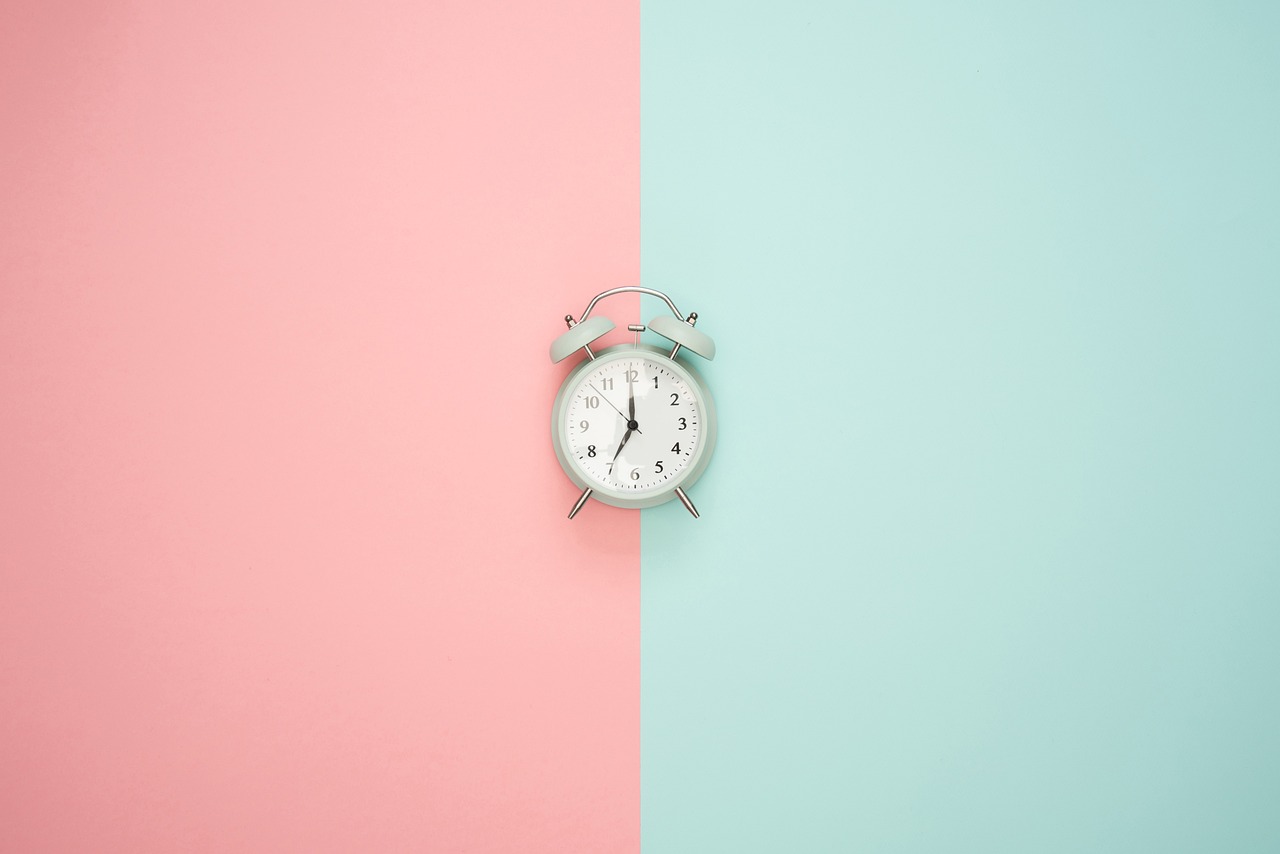
Creating a Positive Bathing Environment
When it comes to bath time for your furry friend, creating a positive environment is crucial. Imagine stepping into a cold, sterile room with no familiar scents or comforts—pretty daunting, right? Your dog feels the same way if bath time is approached without care. To turn this necessary chore into a delightful experience, you need to set the stage. Start by choosing a space that feels safe and familiar to your dog. Whether it’s a bathtub, a shower, or even a kiddie pool outside, the location should be a place where they feel secure.
Next, consider the temperature of the water. Just like you wouldn’t want to take a shower in freezing or scalding water, your dog deserves a comfortable bathing experience too. Aim for lukewarm water; it’s gentle on their skin and makes the process more enjoyable for both of you. You can also enhance the bathing area with soft towels or a non-slip mat to prevent any slips and slides. This will not only keep your pup safe but also provide them with a sense of comfort as they stand in a familiar, cozy environment.
One of the best tricks to create a positive atmosphere is to infuse the experience with treats and praise. Dogs thrive on positive reinforcement, so keep some of their favorite treats handy. Every time they enter the bathing area or even when they tolerate the water, reward them! This not only encourages good behavior but also builds a positive association with bath time. You might say, “Good job, buddy!” in a cheerful tone, which can make your dog feel more at ease. Pairing verbal praise with treats can turn a previously dreaded event into a fun bonding experience.
Additionally, consider playing some soft music or using calming scents like lavender to soothe your dog’s nerves. Just like humans, dogs can benefit from a relaxing atmosphere. You can also try talking to your dog in a calm, reassuring voice throughout the process. This helps them know that everything is okay, and they’re safe in your hands.
Lastly, keep bath time short and sweet. The longer the experience drags on, the more anxious your dog may become. Start with brief sessions and gradually increase the time as your dog becomes more comfortable. Remember, patience is key! With a little time and effort, you can transform bath time from a dreaded task into a cherished routine for both you and your furry companion.
- How often should I bathe my dog? The frequency depends on your dog's breed, age, and activity level. Generally, dogs should be bathed every 4 to 6 weeks.
- What if my dog hates water? Gradually introduce them to water, using treats and praise to create a positive association.
- Can I use human shampoo on my dog? No, human shampoos can irritate a dog's skin. Always use a shampoo specifically formulated for dogs.
- What should I do if my dog gets anxious during bath time? Create a calming environment, use treats, and keep the sessions short to help ease their anxiety.
Using Treats and Praise
One of the most effective ways to make bath time a positive experience for your dog is by incorporating treats and praise into the routine. Dogs, like us, respond well to positive reinforcement. By associating bath time with something enjoyable, you can help alleviate their anxiety and make the process smoother. Imagine this: your dog is a bit apprehensive about stepping into the tub, but as soon as they do, you shower them with praise and offer a tasty treat. Suddenly, that intimidating tub transforms into a place of joy and reward!
To effectively use treats and praise, you can follow these simple steps:
- Start by giving your dog a treat before bath time to create a sense of excitement.
- During the bath, offer treats at intervals to encourage them to stay calm and relaxed.
- Use a cheerful voice to praise them for good behavior, such as standing still or allowing you to wash their paws.
- After the bath, reward them with their favorite treat as a grand finale to reinforce that bath time is a good thing.
It's important to choose the right treats—something your dog absolutely loves! This could be their favorite biscuits, some small pieces of cooked chicken, or even a special toy they only get to play with after bath time. The key is to make them feel like they’ve accomplished something great. This not only helps them associate bath time with positive experiences but also builds a stronger bond between you and your furry friend.
Moreover, consistency is crucial. If you make it a point to always reward your dog during bath time, they will begin to look forward to it rather than dread it. Just like how we enjoy our favorite activities more when we know there’s a reward at the end, your dog will start to anticipate bath time as a fun and rewarding experience. So, grab those treats, put on your best praise face, and turn bath time into a celebration!
Q: How can I calm my dog if they are scared of water?
A: Gradually introduce your dog to water using treats and praise. Start with just a little water and reward them for staying calm.
Q: What type of treats should I use during bath time?
A: Use high-value treats that your dog loves, such as small pieces of chicken or special dog treats. Make sure they are easy to chew and digest.
Q: How often should I praise my dog during the bath?
A: Praise your dog frequently throughout the bath, especially when they show calm behavior or allow you to wash them without fuss.
Gradual Introduction to Water
Introducing your dog to water doesn't have to be a chaotic splash-fest; in fact, it can be a delightful experience for both of you! The key is to take it slow and make it enjoyable. Start by letting your furry friend explore water in a controlled environment. For instance, you might fill a shallow basin or bathtub with just a few inches of lukewarm water. Allow your dog to sniff and investigate at their own pace. This initial introduction is crucial; it sets the tone for future baths and helps to build their confidence.
As your dog becomes more comfortable, you can gradually increase the depth of the water. It's all about creating positive associations. You might want to bring in some of their favorite toys or even a few treats to make the experience more enticing. Think of it like teaching a child to swim; you wouldn’t just throw them into the deep end, right? Similarly, your dog needs to feel safe and secure before they can fully embrace bath time.
Another great way to ease them into water is by using a gentle spray or showerhead. Start with a light mist and gradually increase the flow as they become accustomed to the sensation of water. Always keep an eye on their body language. If they seem anxious or scared, take a step back and allow them to acclimate at their own pace. Remember, patience is key!
Here’s a quick step-by-step guide to help you introduce your dog to water:
- Step 1: Let them explore a shallow basin or tub without water.
- Step 2: Gradually add a small amount of lukewarm water.
- Step 3: Use toys and treats to create positive associations.
- Step 4: Introduce a gentle spray or showerhead, starting with a light mist.
- Step 5: Monitor their comfort level and adjust as needed.
By following these steps, you can transform bath time from a dreaded chore into a fun bonding experience. Remember, the goal is to make your dog feel safe and secure, ensuring they look forward to their next bath!
Q1: How often should I bathe my dog?
A: It depends on the breed and lifestyle of your dog. Generally, once a month is a good rule of thumb, but some dogs may require more frequent baths.
Q2: What if my dog hates water?
A: Gradual introduction is key. Start slow and use positive reinforcement to help them feel more comfortable.
Q3: Can I use human shampoo on my dog?
A: No, human shampoo can irritate a dog's skin. Always use dog-specific shampoos.
Q4: How can I make bath time more enjoyable for my dog?
A: Use treats, toys, and praise to create a positive atmosphere. Make it a fun experience rather than a chore!
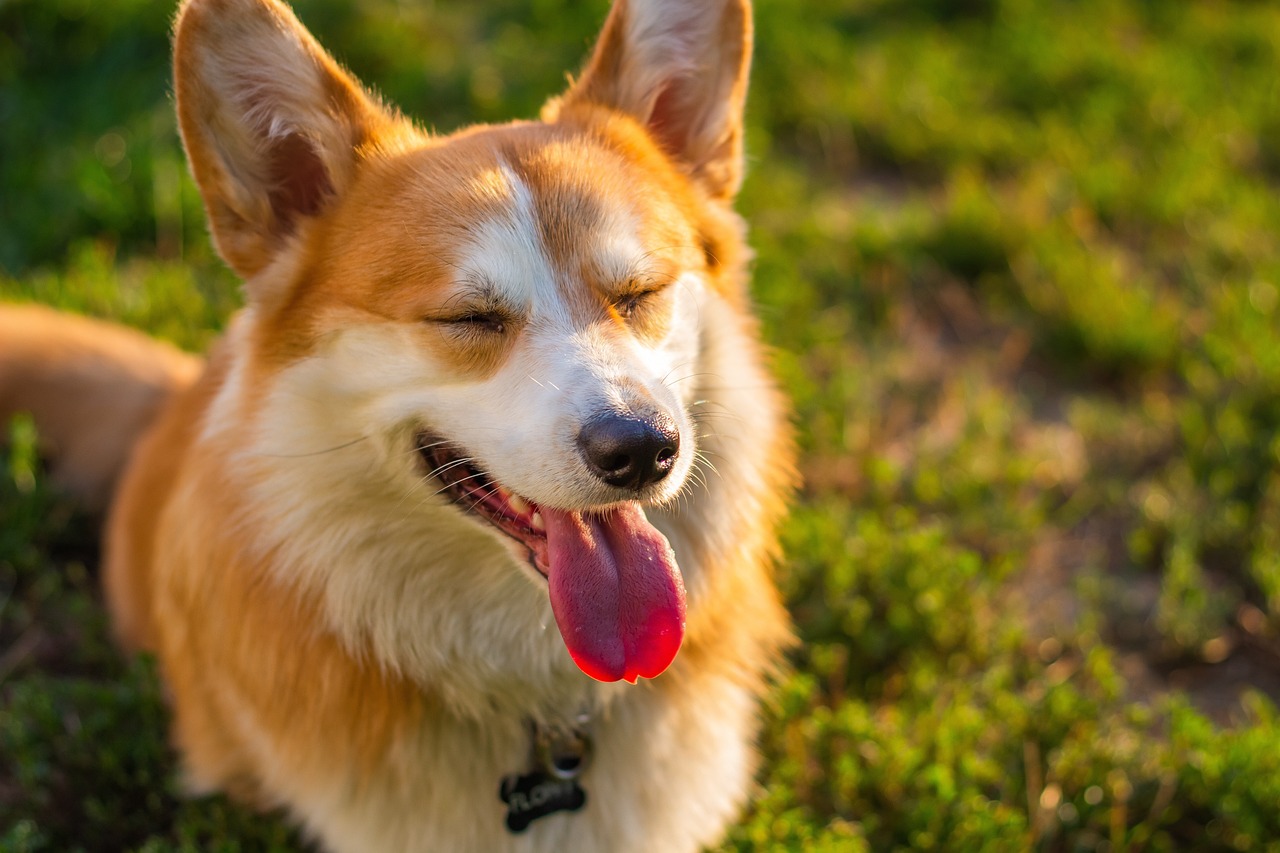
Establishing a Consistent Routine
Creating a consistent bathing routine for your dog is like setting the rhythm in a dance; it helps both you and your furry friend move smoothly through the process. When dogs know what to expect, they tend to feel more relaxed and cooperative. So, how do you establish this routine? First, consider the frequency of baths. Different breeds have different needs based on their coat type, activity level, and even the season. For example, a Golden Retriever may require more frequent baths than a Shih Tzu due to their active lifestyle and tendency to get dirty. A general guideline is to bathe your dog every 4 to 6 weeks, but always keep an eye out for their specific needs.
Next, pay attention to the signs that indicate your dog might need a bath. These can include:
- Odor: If your dog starts to smell, it’s usually a good indicator that they need a wash.
- Dirt Buildup: If you notice mud or grime stuck in their fur, it’s time for a clean-up.
- Itching or Scratching: This could be a sign of skin irritation or allergies, suggesting a bath might help soothe their skin.
To make bath time less of a chore and more of an anticipated event, try to stick to a schedule. For instance, you might choose to bathe your dog every Sunday morning. This not only helps them get used to the idea but also allows you to plan it into your week. Plus, who doesn’t love a fresh-smelling dog to kick off the week?
Consistency is key, and you should also consider the time of day that works best for both of you. Some dogs may feel more relaxed in the morning, while others might prefer the evening when the house is quieter. By establishing a routine that aligns with your dog's natural rhythms, you can foster a more enjoyable bathing experience. Remember, the goal is to make bath time a positive event that both you and your dog look forward to, rather than a dreaded chore.
Frequency of Baths
Determining how often your dog needs a bath can be a bit of a balancing act. On one hand, you want to keep your furry friend clean and fresh, while on the other, too many baths can strip their coat of natural oils, leading to dryness and irritation. So, what’s the magic number for bath frequency? Well, it largely depends on a few key factors including your dog's breed, coat type, and lifestyle.
For instance, long-haired breeds or dogs that love to roll around in the mud might require more frequent baths—perhaps every 4 to 6 weeks. On the flip side, short-haired dogs or those living in a clean environment may only need a bath every few months. It’s essential to observe your dog's coat and skin condition. If they start to develop an odor or their coat looks greasy, it’s likely time for a bath.
Here’s a quick breakdown to help you understand:
| Dog Breed Type | Recommended Bath Frequency |
|---|---|
| Short-haired breeds (e.g., Beagle, Boxer) | Every 2-3 months |
| Long-haired breeds (e.g., Golden Retriever, Shih Tzu) | Every 4-6 weeks |
| Active breeds (e.g., Labrador, Border Collie) | Every month or as needed |
| Senior dogs or dogs with skin conditions | Consult your vet for personalized advice |
Additionally, keep an eye on your dog's activities. If they’ve been playing outside or swimming, you might need to give them a bath sooner. It’s also worth considering seasonal changes; dogs tend to shed more in the spring and fall, so more frequent brushing and occasional baths during these times can help manage loose fur and allergens.
Ultimately, the best approach is to pay attention to your dog's individual needs. Regularly checking their coat, skin, and overall smell will help you gauge when a bath is necessary. And remember, establishing a consistent routine not only helps keep your dog clean but also makes bath time a more predictable and less stressful experience for both of you.
- How often should I bathe my puppy? Puppies generally need fewer baths than adult dogs, usually once every 2-3 months, unless they get particularly dirty.
- Can I use human shampoo on my dog? No, human shampoos can be too harsh for a dog's skin. Always use dog-specific shampoos.
- What if my dog hates baths? Gradual introduction to water and using treats can help make bath time more enjoyable.
- Is it okay to bathe my dog in winter? Yes, but make sure to dry them thoroughly to avoid them getting cold.
Signs Your Dog Needs a Bath
As a dog owner, you're likely familiar with the delightful moments spent with your furry companion. However, there comes a time when that cuddly ball of fur may start to emit an odor that could knock you off your feet! But how do you know when it's time to break out the shampoo and towels? Understanding the signs that indicate your dog needs a bath is crucial for maintaining their hygiene and overall health.
One of the most obvious signs is the odor. If your dog starts to smell like they just rolled in something unpleasant, it's a clear indication that a bath is overdue. Dogs can pick up scents from various sources, whether it's a muddy puddle, other animals, or even their own oils. Regular baths can help manage these odors and keep your home smelling fresh.
Another sign to watch for is dirt buildup. If you notice dirt, mud, or debris stuck to your dog's coat, it's time for a wash. This is especially true for breeds with longer hair, as dirt can become trapped and lead to matting. Not only is a dirty coat uncomfortable for your dog, but it can also result in skin irritations or infections if left untreated.
Additionally, pay attention to your dog's behavior. If they seem to be scratching more than usual or exhibiting signs of discomfort, it might be due to a dirty coat or skin irritation. Bathing your dog can help alleviate these issues by removing allergens, dirt, and excess oils that can lead to itching.
Moreover, if your dog has been swimming or playing in the water, it's essential to give them a bath afterward. Water can wash away dirt but can also introduce bacteria and irritants to your dog's skin. A good rinse and scrub will help keep your pup healthy and comfortable.
Lastly, consider your dog's activity level. More active dogs or those that spend a lot of time outdoors will likely require more frequent baths than their couch-potato counterparts. If your dog has been particularly adventurous, then it's probably time to check for any signs that a bath is needed.
In summary, here are some key signs that your dog needs a bath:
- Odor: A noticeable smell coming from your dog.
- Dirt buildup: Visible mud or debris in their coat.
- Scratching: Increased scratching or signs of discomfort.
- Post-water play: Bathing after swimming or playing in water.
- Activity level: More frequent baths for active dogs.
By keeping an eye out for these signs, you can ensure your dog remains clean, healthy, and happy. Regular bathing not only enhances your dog's appearance but also contributes to their overall well-being.
Q: How often should I bathe my dog?
A: The frequency of baths depends on your dog's breed, coat type, and activity level. Generally, a bath every 4-6 weeks is sufficient for most dogs, but active or outdoor dogs may need more frequent baths.
Q: Can I use human shampoo on my dog?
A: It's not recommended to use human shampoo on dogs as it can disrupt their skin's natural pH balance. Always choose a shampoo specifically formulated for dogs.
Q: What if my dog hates bath time?
A: Gradually introducing your dog to water and making the experience enjoyable with treats and praise can help. Patience and positive reinforcement are key!
Q: Are there any signs of skin irritation I should look for?
A: Yes, signs of skin irritation include redness, swelling, excessive scratching, or hot spots. If you notice any of these, consult your veterinarian.
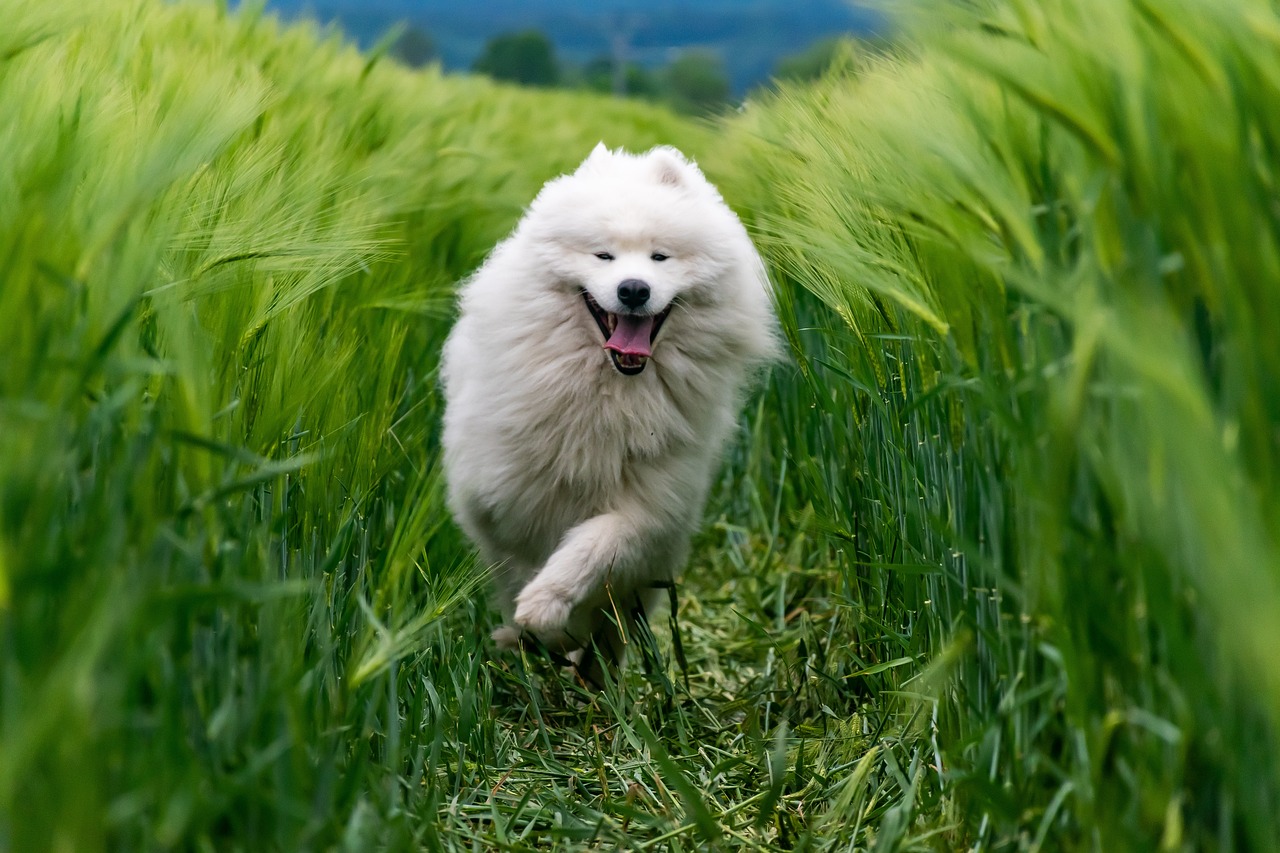
Post-Bath Care Tips
Once your furry friend has emerged from their bath, the fun isn't over yet! In fact, post-bath care is just as crucial as the bathing process itself. This is the time to ensure that your dog feels comfortable, clean, and ready to strut their stuff. First and foremost, drying your dog properly is essential. A wet dog can quickly become chilled, especially if the weather is cooler. To avoid this, consider using a soft, absorbent towel to gently pat them dry. You might find that your dog enjoys this part, almost like a mini massage!
After towel drying, you can use a pet-friendly blow dryer set on a low, cool setting. This can help remove any lingering moisture, especially for breeds with thicker coats. Just remember to keep the dryer at a safe distance to avoid overheating their skin. Did you know that some dogs actually love the sensation of the warm air? It can be a delightful experience for them, making them look forward to bath time even more!
Another important aspect of post-bath care is brushing. Regular brushing after baths can significantly contribute to your dog's coat health. Not only does it help remove any loose hair and dirt, but it also distributes natural oils throughout their coat, giving it that shiny, healthy appearance. For dogs with longer hair, brushing can prevent matting and tangles, which can be uncomfortable for them. Depending on your dog’s coat type, you might need different types of brushes. For instance:
| Coat Type | Recommended Brush |
|---|---|
| Short Hair | Slicker Brush |
| Medium Hair | Pin Brush |
| Long Hair | Wide-Toothed Comb |
Finally, don’t forget to reward your dog with treats and affection after bath time. This simple gesture can create a positive association with the bathing process, making them more likely to enjoy it in the future. A few tasty treats or a little playtime can go a long way in reinforcing that bath time is not just a chore, but a fun experience!
Q: How often should I bathe my dog?
A: The frequency of baths depends on your dog's breed, coat type, and lifestyle. Generally, most dogs benefit from a bath every 4 to 6 weeks, but some may need it more often if they get particularly dirty.
Q: Can I use human shampoo on my dog?
A: It's not advisable to use human shampoo on dogs, as it can disrupt their skin's natural pH balance. Always opt for dog-specific shampoos that cater to their unique needs.
Q: What if my dog hates water?
A: If your dog shows signs of fear or anxiety towards water, try gradually introducing them to it. Start with just a damp cloth or sponge, and reward them with treats and praise to create a positive experience.
Q: Are there any signs that my dog needs a bath?
A: Yes! If your dog starts to smell bad, has visible dirt or grease on their coat, or if their skin appears flaky or irritated, it’s time for a bath.
Drying Techniques
After your dog has enjoyed a refreshing bath, it’s crucial to dry them properly. Not only does this help them feel comfortable, but it also prevents them from getting chilled. Imagine stepping out of a warm shower into a cold room—yikes! Your furry friend deserves better! Here are some effective drying techniques to consider:
First off, you can use a towel to absorb most of the moisture. Choose a large, absorbent towel that can wrap around your dog comfortably. Begin by gently patting your dog dry, rather than rubbing, as this can cause tangles and discomfort. It's like giving your dog a cozy hug while they dry off!
If your dog is particularly fluffy or has a thick coat, you might want to consider a dog-specific dryer. These dryers are designed to blow warm air and can help speed up the drying process. Just remember to keep the nozzle at a safe distance to avoid startling them. Think of it as a gentle breeze on a sunny day—refreshing, not overwhelming!
In some cases, you may find it beneficial to use a high-velocity pet dryer. While these can be quite loud, many dogs learn to tolerate or even enjoy them over time. Start with a lower setting and gradually increase the speed as your dog becomes more accustomed to the sound. It's like introducing them to a new toy—slow and steady wins the race!
Another tip is to keep the environment warm. If you’re drying your dog indoors, make sure the room is cozy. You can use a space heater or simply close windows and doors to maintain warmth. This way, your dog won’t feel cold while drying off, making the experience much more pleasant.
Lastly, don’t forget to check your dog’s ears and paws. Make sure they are dry, as moisture can lead to infections. You might even consider using a cotton ball to gently wipe their ears, ensuring they are moisture-free. Think of it as a little spa treatment for your pup!
By using these drying techniques, you’ll not only keep your dog comfortable but also promote a healthy coat. A well-dried dog is a happy dog, and a happy dog means a happy owner!
- How often should I bathe my dog? The frequency depends on your dog's breed, coat type, and lifestyle. Generally, a bath every 4-6 weeks is sufficient for most dogs.
- Can I use human shampoo on my dog? It's best to avoid human shampoos as they can disrupt your dog's skin pH balance. Always opt for dog-specific shampoos.
- What if my dog hates baths? Gradual exposure and positive reinforcement with treats and praise can help your dog develop a more positive association with bath time.
- Is it necessary to dry my dog after a bath? Yes, drying is important to prevent your dog from getting cold and to maintain their coat health.
Brushing for a Healthy Coat
Brushing your dog’s coat is an essential part of their grooming routine that goes beyond just aesthetics. It plays a crucial role in maintaining their overall health and well-being. Regular brushing helps to remove dirt, loose hair, and debris, preventing matting and tangles that can cause discomfort. Moreover, it stimulates the skin and promotes healthy oil distribution, which keeps their coat shiny and vibrant. Imagine your dog’s coat as a beautiful garden; without regular care, it can quickly become overgrown and unkempt!
When it comes to brushing, the frequency and technique can vary based on your dog's breed, coat type, and lifestyle. Long-haired breeds, like Golden Retrievers or Shih Tzus, may require daily brushing to prevent knots, while short-haired breeds, such as Beagles or Boxers, might only need brushing once a week. Understanding your dog's specific needs is key to keeping their coat healthy and manageable.
Here are some important tips to keep in mind while brushing:
- Choose the Right Brush: Different coat types require different brushes. For instance, slicker brushes are great for removing tangles and mats in long-haired breeds, while bristle brushes work well for short-haired dogs.
- Be Gentle: Always brush gently to avoid hurting your dog. If you encounter a knot, work it out slowly with your fingers before using the brush.
- Make it Enjoyable: Incorporate treats and praise during brushing sessions to create a positive experience. This will help your dog associate brushing with good things!
After brushing, it’s also beneficial to inspect your dog’s skin for any signs of irritation, parasites, or abnormalities. Regular brushing not only keeps their coat looking great but also allows you to monitor their skin health. If you notice any unusual bumps or irritations, consulting your veterinarian is always a good idea.
In conclusion, brushing is more than just a grooming chore; it’s an opportunity to bond with your dog while ensuring they look and feel their best. Think of it as a daily ritual that enhances both your pet's appearance and their overall health. So grab that brush, and let the grooming adventures begin!
Q: How often should I brush my dog?
A: It depends on your dog's breed and coat type. Long-haired dogs may require daily brushing, while short-haired breeds might only need it once a week.
Q: What type of brush is best for my dog?
A: The best brush varies by coat type. Slicker brushes are ideal for long-haired dogs, while bristle brushes work well for short-haired breeds. Always choose a brush that suits your dog's specific needs.
Q: Can brushing help with shedding?
A: Yes! Regular brushing can help reduce shedding by removing loose hair and preventing mats, which can trap loose fur.
Q: Is it normal for my dog to dislike brushing?
A: Some dogs may not enjoy brushing, especially if they haven't been accustomed to it. Gradually introducing brushing with treats and praise can help them become more comfortable.
Frequently Asked Questions
- How can I tell if my dog is anxious about bath time?
Dogs may show signs of anxiety through behaviors like whining, hiding, or trying to escape. If your pup seems restless or is shaking, it’s a clear indicator that they might not be thrilled about the idea of a bath. Paying close attention to these signs can help you adjust your approach to make bath time more enjoyable.
- What type of shampoo should I use for my dog?
Choosing the right shampoo depends on your dog's coat type and any skin sensitivities they may have. For instance, hypoallergenic shampoos are great for dogs with sensitive skin, while natural ingredient shampoos can be a safe choice for those prone to allergies. Always read labels to ensure you’re picking a product that suits your furry friend’s needs.
- How can I make bath time a positive experience for my dog?
Creating a calm environment is key! Use treats and praise to reward your dog during the bath. Gradually introducing them to water can also help ease their fears. The more positive experiences you create around bath time, the more your dog will look forward to it!
- How often should I bathe my dog?
The frequency of baths can vary based on your dog's breed, lifestyle, and coat type. Generally, dogs with longer hair may need more frequent baths, while short-haired breeds might only need a bath every few months. Keep an eye out for signs like odor or dirt buildup to determine when a bath is necessary.
- What should I do after bathing my dog?
After bath time, it's important to dry your dog properly to avoid them getting cold. Use a soft towel or a pet dryer on a low setting. Brushing your dog after the bath can also help keep their coat healthy and free of mats, ensuring they feel comfortable and look great!












